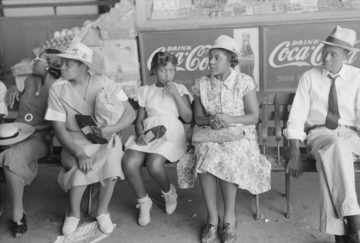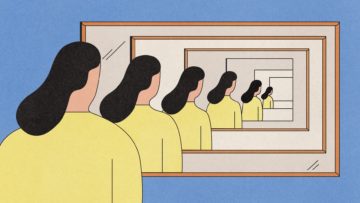Manisha Sinha in Boston Review:
 Walter Johnson is upset at the state of the historiography of slavery and rightly challenges uncritical talk of “dehumanization.” In its most extreme iteration, a few have even likened enslavement to the domestication of animals. This logic would carry us all the way back to Aristotle, who described slaves as talking tools. Pro-slavery ideologues were fond of this idea, even though southern slaveholders exploited the “human capacities” of enslaved people—to labor, reproduce, and, in Johnson’s more Genovesean formulation, “to bear witness, to provide satisfaction, to provide a living, human register of slaveholders’ power.”
Walter Johnson is upset at the state of the historiography of slavery and rightly challenges uncritical talk of “dehumanization.” In its most extreme iteration, a few have even likened enslavement to the domestication of animals. This logic would carry us all the way back to Aristotle, who described slaves as talking tools. Pro-slavery ideologues were fond of this idea, even though southern slaveholders exploited the “human capacities” of enslaved people—to labor, reproduce, and, in Johnson’s more Genovesean formulation, “to bear witness, to provide satisfaction, to provide a living, human register of slaveholders’ power.”
To advance this critique, Johnson appropriates Cedric Robinson’s thesis of racial capitalism. But he does not fully engage the antithesis of that social arrangement: what Robinson called the black radical tradition and W. E. B. Du Bois “the role black folk played” in reconstructing democracy. Radical black scholars and activists—from Robinson, Du Bois, and C. L. R. James to Claudia Jones, Ida B. Wells, Sterling Stuckey, and Vincent Harding—wrote histories not just of black oppression but also of resistance, a term that many historians of slavery and the African American experience now consider passé. Indeed, Johnson does not use the word at all. It might have an old-fashioned Marxist ring to it, but it has proven fruitful and capacious in the hands of such contemporary scholars of black politics and art as Eric Foner, Nell Painter, Steven Hahn, and Robin D. G. Kelley. These writers are heirs to a tradition that stretches back, in my reckoning, to African American abolitionists: Phillis Wheatley, Sojourner Truth, David Walker, Henry Highland Garnet, Frederick Douglass, Frances Harper, and Martin Delany. The richness of this lineage is missing from Johnson’s account even though, following Kelley, he acknowledges its contemporary activist formulation in the Movement for Black Lives’ broad-ranging manifesto, “A Vision for Black Lives.”
More here. (Note: Throughout February, at least one post will be dedicated to Black History Month. The theme for 2023 is Black Resistance. Please send us anything you think is relevant for inclusion)

 He awoke to the sound of water dripping into a rusted sink. The streets below were bathed in medieval moonlight, reverberating silence. He lay there grappling with the terror of beauty, as the night unfolded like a Chinese screen. He lay shuddering, riveted by flickering movements of aliens and angels as the words and melodies of “Marquee Moon” were formed, drop by drop, note by note, from a state of calm yet sinister excitement. He was Tom Verlaine, and that was his process: exquisite torment.
He awoke to the sound of water dripping into a rusted sink. The streets below were bathed in medieval moonlight, reverberating silence. He lay there grappling with the terror of beauty, as the night unfolded like a Chinese screen. He lay shuddering, riveted by flickering movements of aliens and angels as the words and melodies of “Marquee Moon” were formed, drop by drop, note by note, from a state of calm yet sinister excitement. He was Tom Verlaine, and that was his process: exquisite torment. Three is a more interesting number than two. There’s a romance to the love triangle. There’s an inherent asymmetry, a more volatile set of relationships. Our desires are most manifest when we’re being pulled in two directions, when there are disparate, orthogonal, or even oppositional forces inside us. Those are the moments when complex self-knowledge happens. The times when you have to prioritize multiple, competing selves lead to personal transformation, I think.
Three is a more interesting number than two. There’s a romance to the love triangle. There’s an inherent asymmetry, a more volatile set of relationships. Our desires are most manifest when we’re being pulled in two directions, when there are disparate, orthogonal, or even oppositional forces inside us. Those are the moments when complex self-knowledge happens. The times when you have to prioritize multiple, competing selves lead to personal transformation, I think. When
When  A magnitude-7.8 earthquake hit southeastern Turkey and parts of Syria in the early hours of the morning of 6 February. At least 5,000 people are known to have lost their lives, with thousands more injured. The quake was followed by a magnitude-7.5 event some 9 hours later, as well as more than 200 aftershocks.
A magnitude-7.8 earthquake hit southeastern Turkey and parts of Syria in the early hours of the morning of 6 February. At least 5,000 people are known to have lost their lives, with thousands more injured. The quake was followed by a magnitude-7.5 event some 9 hours later, as well as more than 200 aftershocks. Thirty years ago, Imran Khan led the Pakistani national team to victory at the Cricket World Cup, cementing his place as one of the greatest athletes in the history of the sport, and as a hero in his country. He retired at the age of thirty-nine. Four years later, in 1996, he founded a political party called Pakistan Tehreek-e-Insaf (P.T.I.), and he began speaking out more on political and cultural issues. In 2013, his party started winning significant power, thanks largely to Khan’s popularity. Then, in 2018, in an election marred by polling irregularities, and with the support of Pakistan’s military, which wields de-facto control of the country,
Thirty years ago, Imran Khan led the Pakistani national team to victory at the Cricket World Cup, cementing his place as one of the greatest athletes in the history of the sport, and as a hero in his country. He retired at the age of thirty-nine. Four years later, in 1996, he founded a political party called Pakistan Tehreek-e-Insaf (P.T.I.), and he began speaking out more on political and cultural issues. In 2013, his party started winning significant power, thanks largely to Khan’s popularity. Then, in 2018, in an election marred by polling irregularities, and with the support of Pakistan’s military, which wields de-facto control of the country,  If we don’t know how to distinguish bad thinking from good, we can end up believing what we shouldn’t, and behaving in ways that are harmful to ourselves, to others, and to the planet.
If we don’t know how to distinguish bad thinking from good, we can end up believing what we shouldn’t, and behaving in ways that are harmful to ourselves, to others, and to the planet. In 1852, the Third Avenue Railroad Company was founded. It ran between City Hall and 62nd Street in Manhattan. Its horse-drawn streetcars quickly became the primary mode of transportation in the city. A small number of the cars carried placards indicating that they accepted African American passengers. Additional cars occasionally allowed Black passengers at the discretion of the operator, and with the approval of the white passengers.
In 1852, the Third Avenue Railroad Company was founded. It ran between City Hall and 62nd Street in Manhattan. Its horse-drawn streetcars quickly became the primary mode of transportation in the city. A small number of the cars carried placards indicating that they accepted African American passengers. Additional cars occasionally allowed Black passengers at the discretion of the operator, and with the approval of the white passengers. The new class of obesity drugs — referred to as “GLP-1-based,” since they contain synthetic versions of the human hormone glucagon-like peptide-1 — are considered the most powerful ever marketed for weight loss. Since the US Food and Drug Administration
The new class of obesity drugs — referred to as “GLP-1-based,” since they contain synthetic versions of the human hormone glucagon-like peptide-1 — are considered the most powerful ever marketed for weight loss. Since the US Food and Drug Administration  Two hundred million years ago, long before we walked the Earth, it was a world of cold-blooded creatures and dull color — a kind of terrestrial sea of brown and green. There were plants, but their reproduction was a tenuous game of chance — they released their pollen into the wind, into the water, against the staggering improbability that it might reach another member of their species. No algorithm, no swipe — just chance.
Two hundred million years ago, long before we walked the Earth, it was a world of cold-blooded creatures and dull color — a kind of terrestrial sea of brown and green. There were plants, but their reproduction was a tenuous game of chance — they released their pollen into the wind, into the water, against the staggering improbability that it might reach another member of their species. No algorithm, no swipe — just chance. Some of NSO’s human targets had already been beaten or tortured in, for example, Morocco (for oppositional activity or revealing property deals involving the royal family), where five thousand phones were invaded. In Mexico, where over 150 journalists (including those investigating drug cartels) have been murdered by both cartels and the police since 2000, fifteen thousand phone numbers were on NSO’s list. Among NSO’s targets in Mexico, alongside lawyers and journalists, were the driver, the cardiologist and the wife of the politician Andrés Manuel López Obrador (who was elected president in 2018), along with three of his children.
Some of NSO’s human targets had already been beaten or tortured in, for example, Morocco (for oppositional activity or revealing property deals involving the royal family), where five thousand phones were invaded. In Mexico, where over 150 journalists (including those investigating drug cartels) have been murdered by both cartels and the police since 2000, fifteen thousand phone numbers were on NSO’s list. Among NSO’s targets in Mexico, alongside lawyers and journalists, were the driver, the cardiologist and the wife of the politician Andrés Manuel López Obrador (who was elected president in 2018), along with three of his children. A curious passage in Salammbô, Gustave Flaubert’s 1862 Orientalist phantasmagoria, describes a mostly forgotten practice of the ancient Carthaginians:
A curious passage in Salammbô, Gustave Flaubert’s 1862 Orientalist phantasmagoria, describes a mostly forgotten practice of the ancient Carthaginians: Caitlin Zaloom (CZ): Your book presents a counterintuitive perspective: that emotions live between people, not only inside them. How did you come to see emotions as fundamentally social?
Caitlin Zaloom (CZ): Your book presents a counterintuitive perspective: that emotions live between people, not only inside them. How did you come to see emotions as fundamentally social?